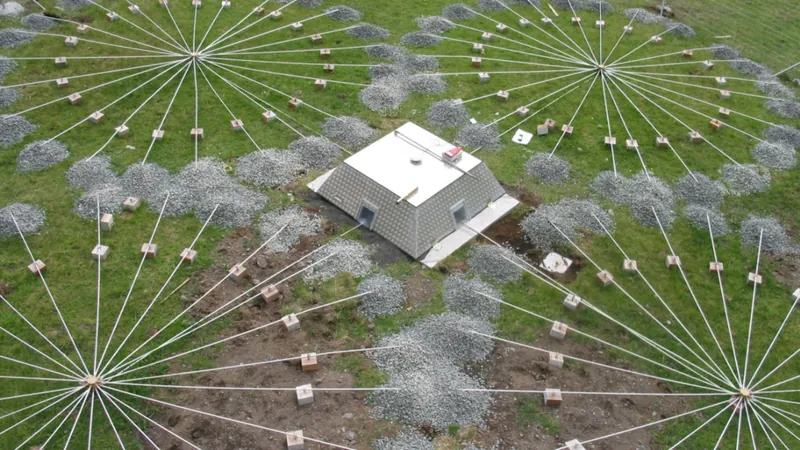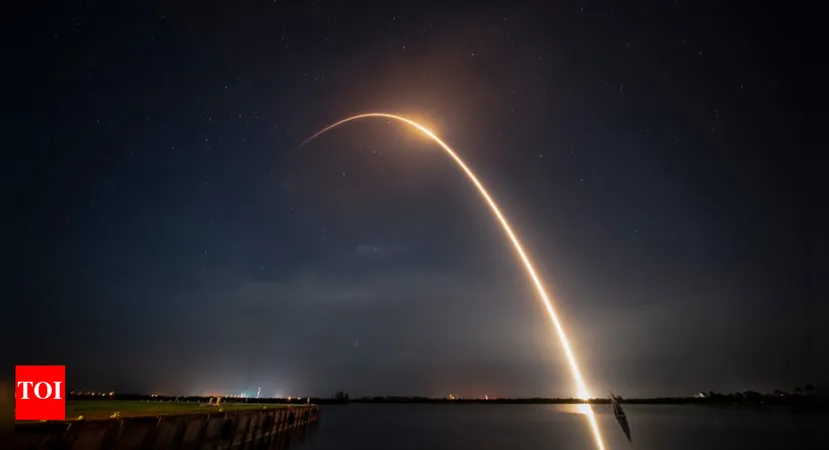
High-Tech Nuclear Sensors Set to Revolutionize Space Debris Tracking!
2025-05-12
Author: Daniel
Unlocking the Secrets of Space Debris with Nuclear Sensors
Scientists are making groundbreaking strides in using advanced sensors, originally designed to detect nuclear detonations, to track dangerous space debris and meteorites falling to Earth—particularly in some of our planet's most remote locations.
Infrasound Waves: The Hidden Sound of Space!
Since the Cold War, an array of ultra-sensitive detectors has been deployed globally to capture infrasound waves—sound waves that are below the human hearing threshold. These waves, while silent to our ears, serve as powerful signals produced by nuclear tests and, surprisingly, by large chunks of space debris disintegrating in our atmosphere.
The Advantage of Infrasound: A Game Changer for Tracking!
Part of the Comprehensive Nuclear-Test-Ban Treaty Organization's network, these infrasound sensors are stepping into a new role. According to Elizabeth Silber, a leading scientist at Sandia National Laboratories, they provide unparalleled global monitoring capabilities that transcend the limitations of traditional optical cameras and radar systems.
"Unlike optical systems that depend on clear skies or radar that has geographical constraints, infrasound sensors can operate continuously, regardless of weather conditions or time of day," she explained in an interview with Space.com.
Triangulating the Trajectories: How It Works!
Utilizing a triangulation method, these sensors compare signals from multiple locations to pinpoint the trajectory of falling objects. However, their effectiveness varies depending on the angle of entry into the atmosphere.
The Challenge of Shallow Angles
Silber and her team discovered that steep-angled entries (over 60 degrees) are easy to track because they release energy over a short segment of the atmosphere. In contrast, objects entering at shallower angles produce more complex data.
"Shallow-angled entries create ambiguous signals since they travel vast distances, leading to variability in the arrival directions observed by the sensors," Silber noted.
Filling the Gaps in Remote Areas!
While optical and radar observations excel in capturing stunning events like meteors streaking across the clear night sky, these instruments are often absent in monitoring vast oceanic regions where space debris typically lands. This glaring gap has ignited the push for new methodologies combining various detection techniques.
Understanding Limitations and Future Directions
Silber admits that while infrasound sensors can't provide immediate warning of incoming objects, they can significantly enhance our understanding of potential impacts and guide recovery efforts. As most meteorites enter the atmosphere at shallow angles—sometimes as low as 45 degrees—understanding their trajectories remains a priority for researchers.
The Road Ahead: A Safer Future!
Although we're not yet equipped for real-time warnings, the wealth of data from infrasound detection presents exciting opportunities for characterizing space debris events. Scientists are eager to uncover how this technology may illuminate our understanding of such perilous phenomena.


 Brasil (PT)
Brasil (PT)
 Canada (EN)
Canada (EN)
 Chile (ES)
Chile (ES)
 Česko (CS)
Česko (CS)
 대한민국 (KO)
대한민국 (KO)
 España (ES)
España (ES)
 France (FR)
France (FR)
 Hong Kong (EN)
Hong Kong (EN)
 Italia (IT)
Italia (IT)
 日本 (JA)
日本 (JA)
 Magyarország (HU)
Magyarország (HU)
 Norge (NO)
Norge (NO)
 Polska (PL)
Polska (PL)
 Schweiz (DE)
Schweiz (DE)
 Singapore (EN)
Singapore (EN)
 Sverige (SV)
Sverige (SV)
 Suomi (FI)
Suomi (FI)
 Türkiye (TR)
Türkiye (TR)
 الإمارات العربية المتحدة (AR)
الإمارات العربية المتحدة (AR)